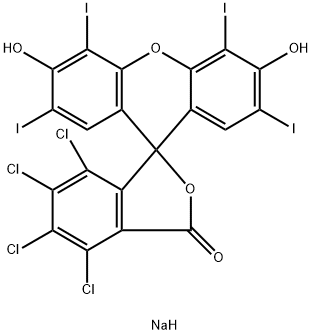Rose Bengal is a stain used in the eye drops to identify the eye damage. It finds application in the preparation of foraminifera for microscopic analysis, photosensitizing reactions and as a dye. In synthetic chemistry, it is utilized to convert triplet oxygen to singlet oxygen, which is used in [2+2] cycloadditions with alkenes. Its derivatives have important medical functions and used for the treatment of cancer. It acts as an alternative to phloxine B in Kreyberg's stain for keratin and mucus. As a fluorescent probe, it is used for the determination of NAD binding sites of alcohol dehydrogenase.

